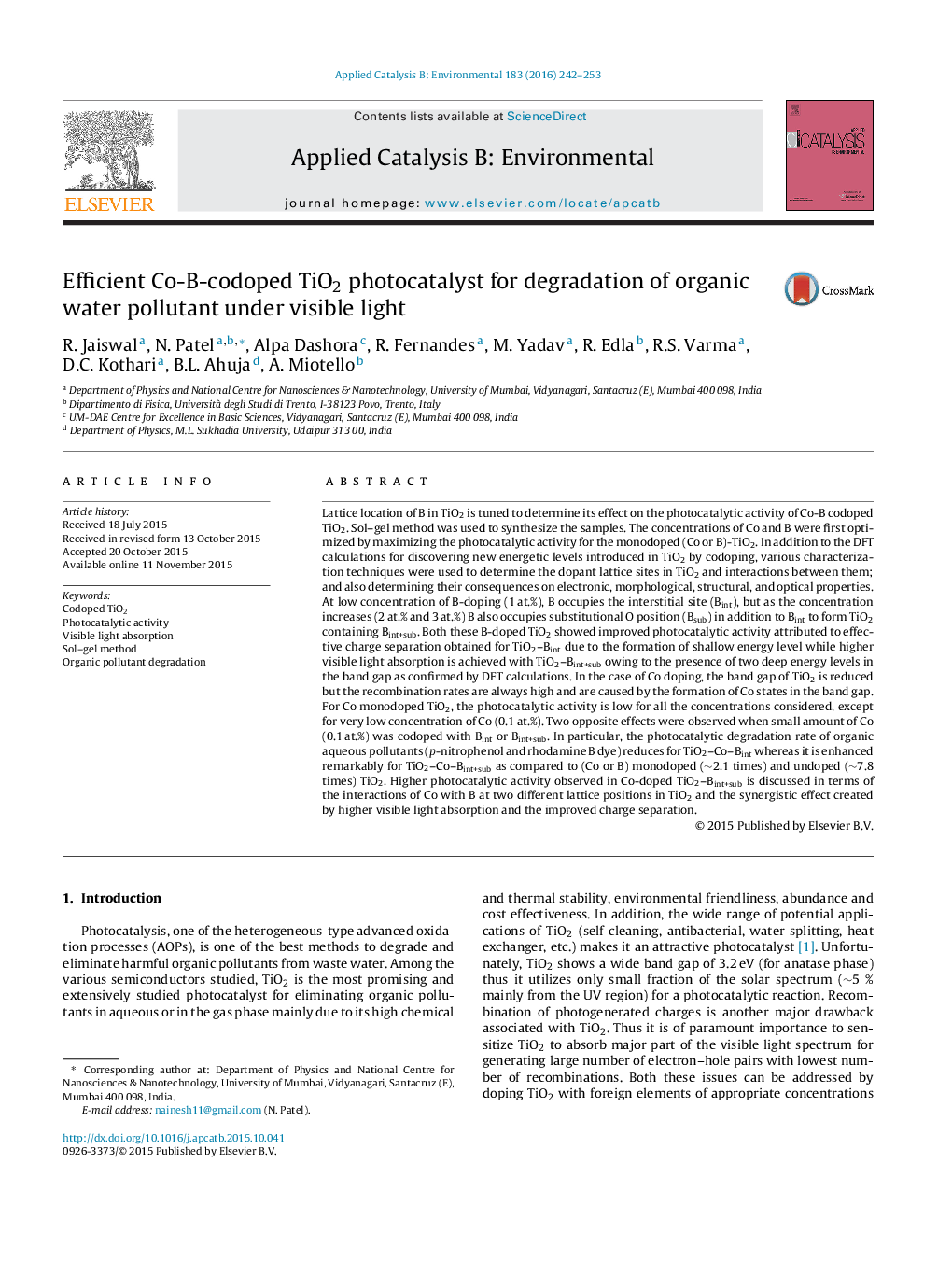| کد مقاله | کد نشریه | سال انتشار | مقاله انگلیسی | نسخه تمام متن |
|---|---|---|---|---|
| 45153 | 46401 | 2016 | 12 صفحه PDF | دانلود رایگان |

• Co-B-codoped TiO2 was synthesized with B in different lattice locations in TiO2.
• Codoped TiO2 showed ∼7.8 times higher organic pollutant degradation rate than undoped TiO2.
• When Co is codoped with B in interstitial location of TiO2 lattice the activity decreases.
• Activity enhances by codoping Co with B in both interstitial and substitutional locations.
• Synergistic effect is created by higher visible light absorption and improved charge separation.
Lattice location of B in TiO2 is tuned to determine its effect on the photocatalytic activity of Co-B codoped TiO2. Sol–gel method was used to synthesize the samples. The concentrations of Co and B were first optimized by maximizing the photocatalytic activity for the monodoped (Co or B)-TiO2. In addition to the DFT calculations for discovering new energetic levels introduced in TiO2 by codoping, various characterization techniques were used to determine the dopant lattice sites in TiO2 and interactions between them; and also determining their consequences on electronic, morphological, structural, and optical properties. At low concentration of B-doping (1 at.%), B occupies the interstitial site (Bint), but as the concentration increases (2 at.% and 3 at.%) B also occupies substitutional O position (Bsub) in addition to Bint to form TiO2 containing Bint+sub. Both these B-doped TiO2 showed improved photocatalytic activity attributed to effective charge separation obtained for TiO2–Bint due to the formation of shallow energy level while higher visible light absorption is achieved with TiO2–Bint+sub owing to the presence of two deep energy levels in the band gap as confirmed by DFT calculations. In the case of Co doping, the band gap of TiO2 is reduced but the recombination rates are always high and are caused by the formation of Co states in the band gap. For Co monodoped TiO2, the photocatalytic activity is low for all the concentrations considered, except for very low concentration of Co (0.1 at.%). Two opposite effects were observed when small amount of Co (0.1 at.%) was codoped with Bint or Bint+sub. In particular, the photocatalytic degradation rate of organic aqueous pollutants (p-nitrophenol and rhodamine B dye) reduces for TiO2–Co–Bint whereas it is enhanced remarkably for TiO2–Co–Bint+sub as compared to (Co or B) monodoped (∼2.1 times) and undoped (∼7.8 times) TiO2. Higher photocatalytic activity observed in Co-doped TiO2–Bint+sub is discussed in terms of the interactions of Co with B at two different lattice positions in TiO2 and the synergistic effect created by higher visible light absorption and the improved charge separation.
Figure optionsDownload as PowerPoint slide
Journal: Applied Catalysis B: Environmental - Volume 183, April 2016, Pages 242–253